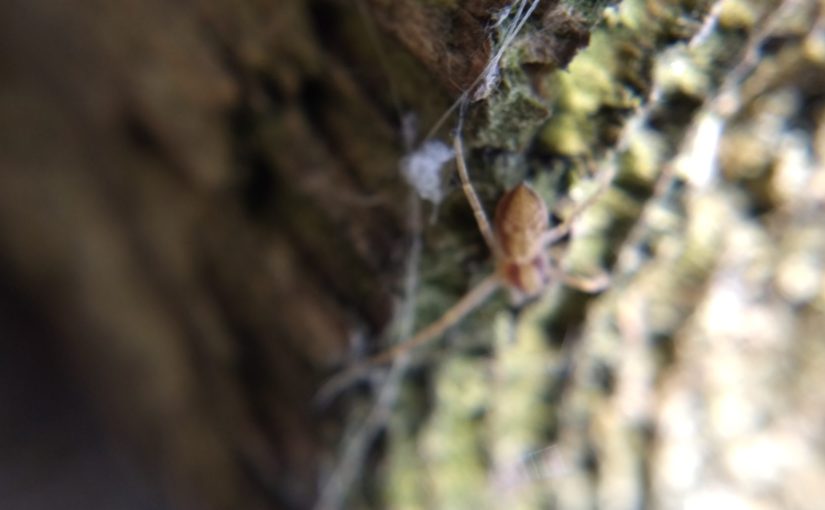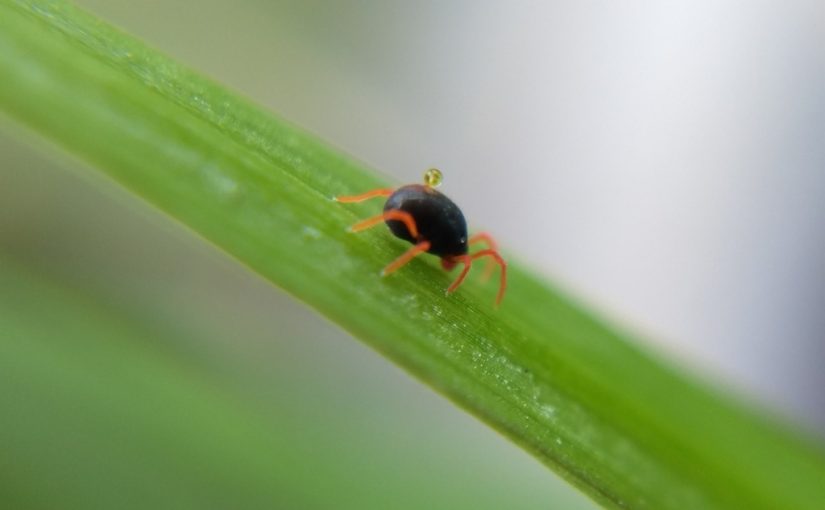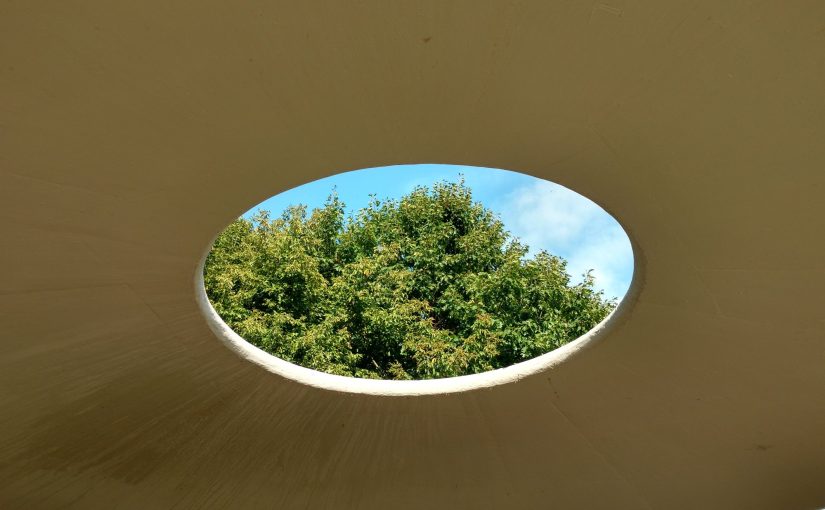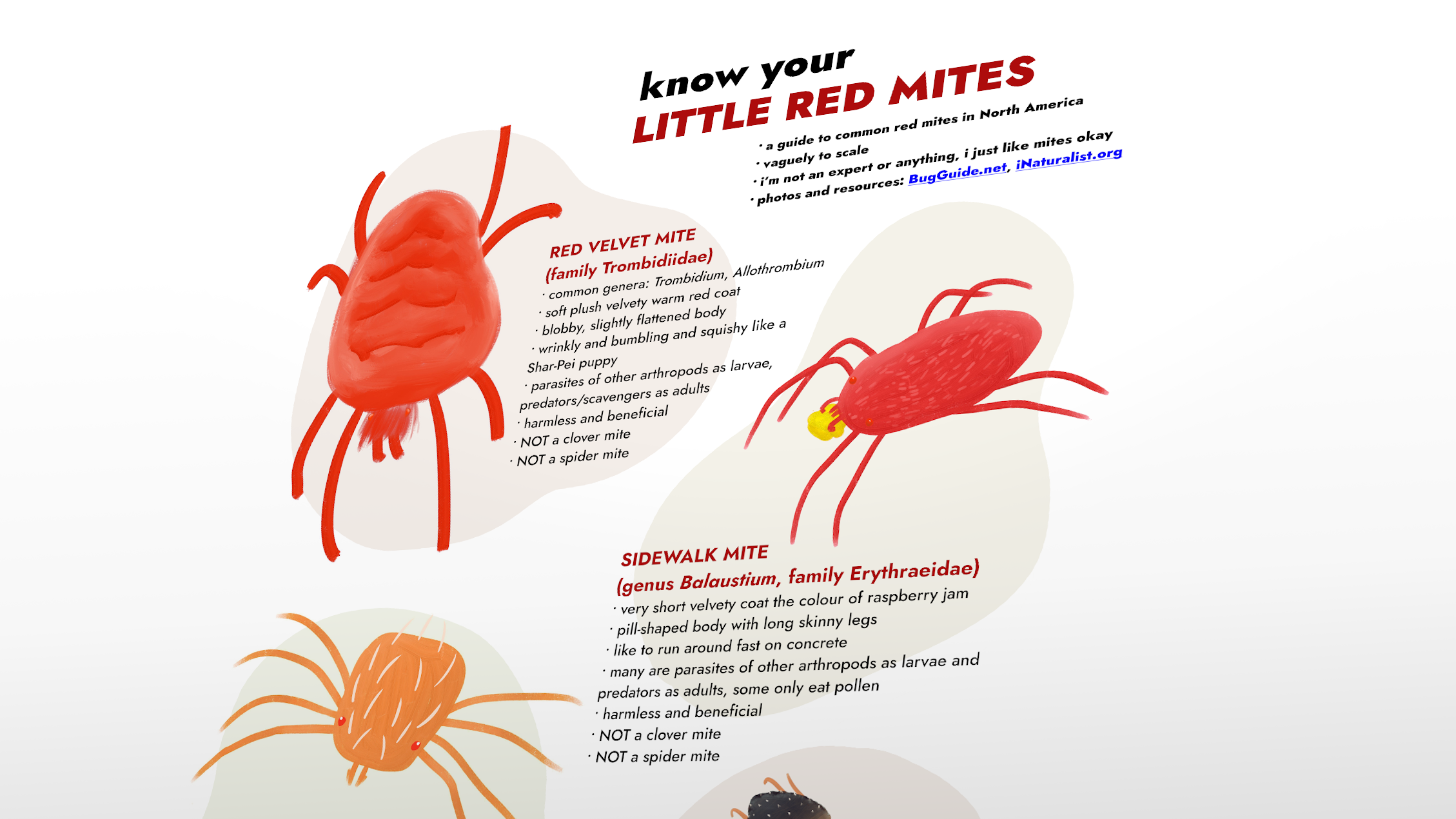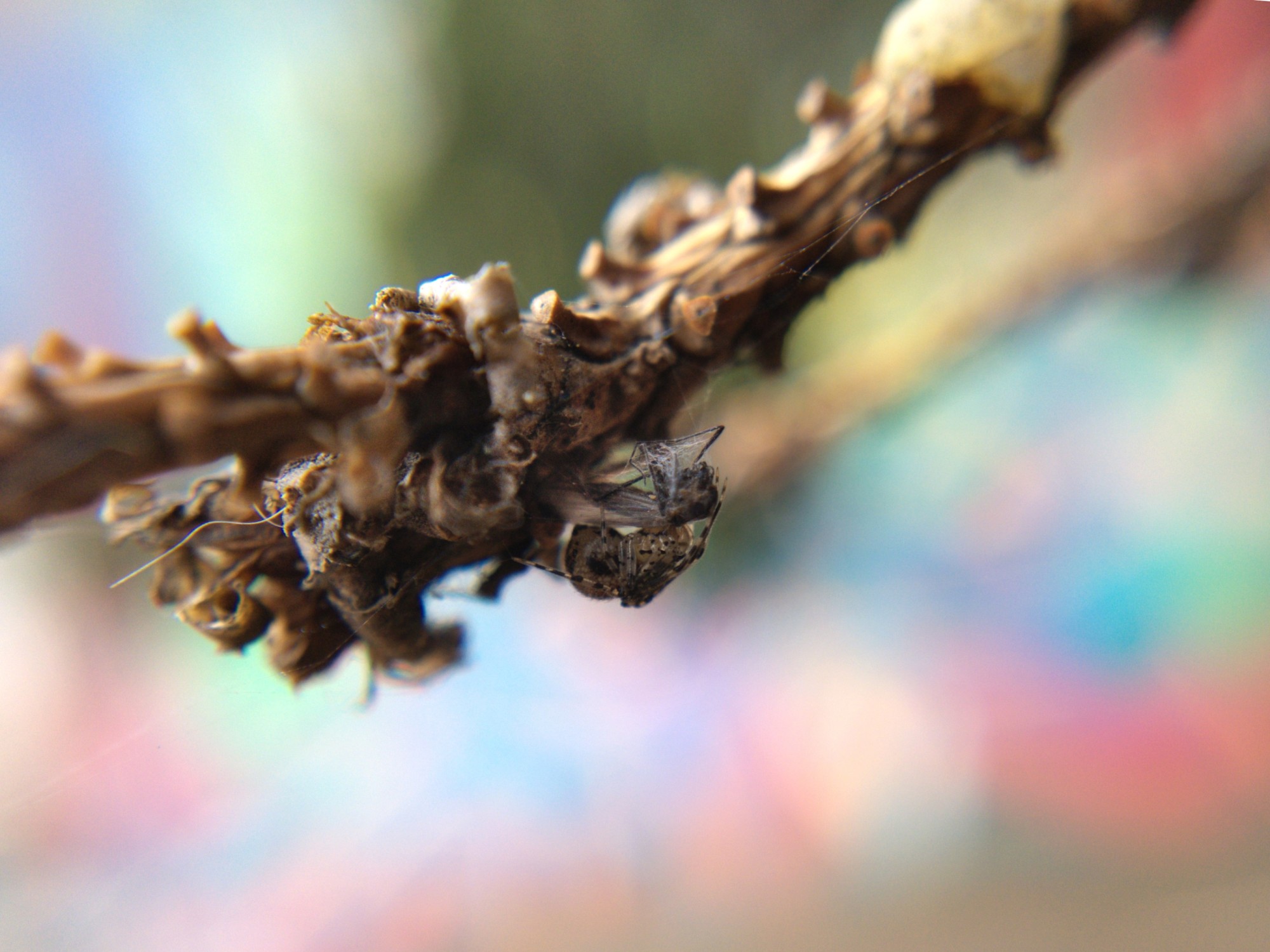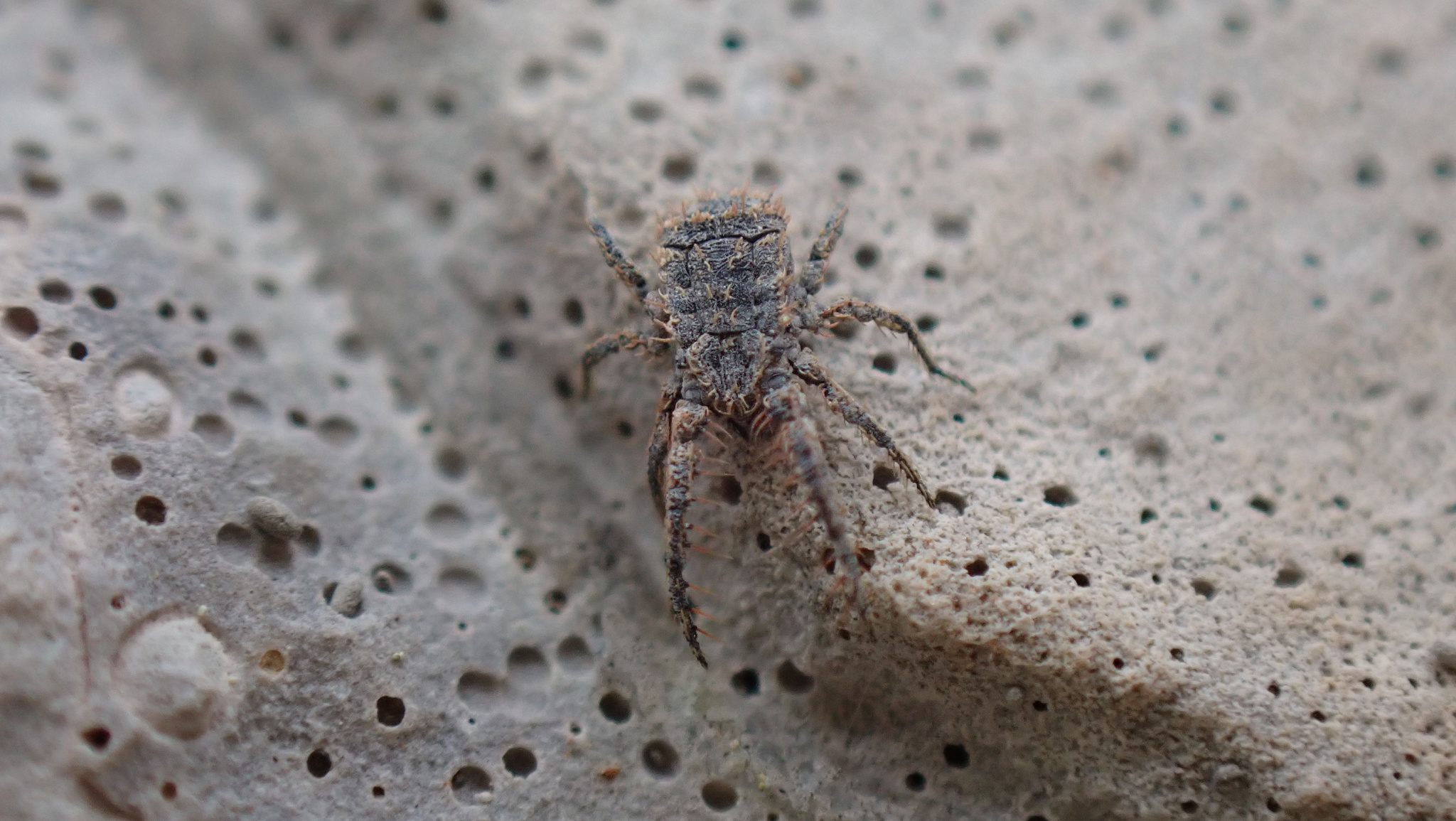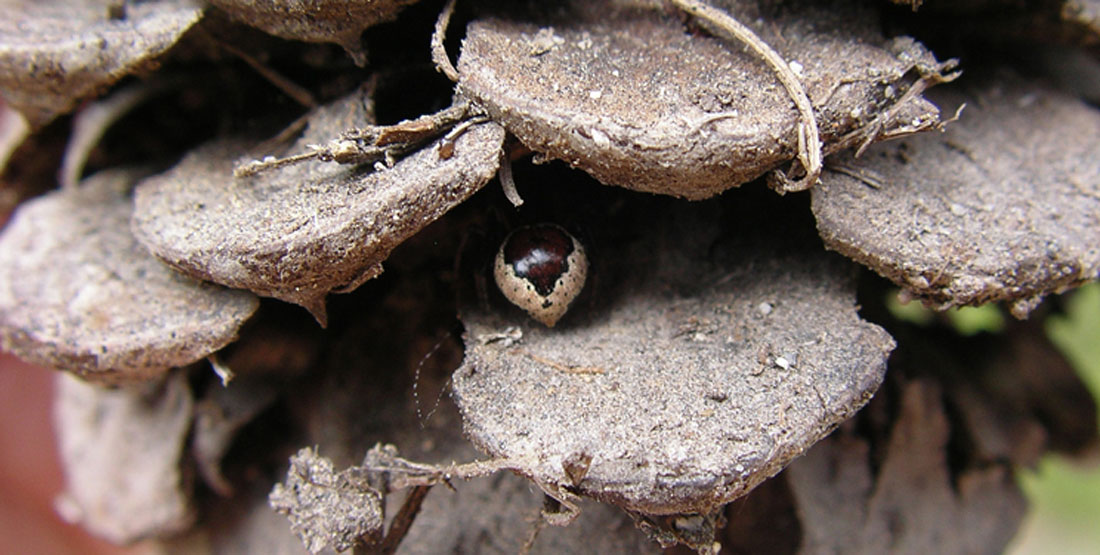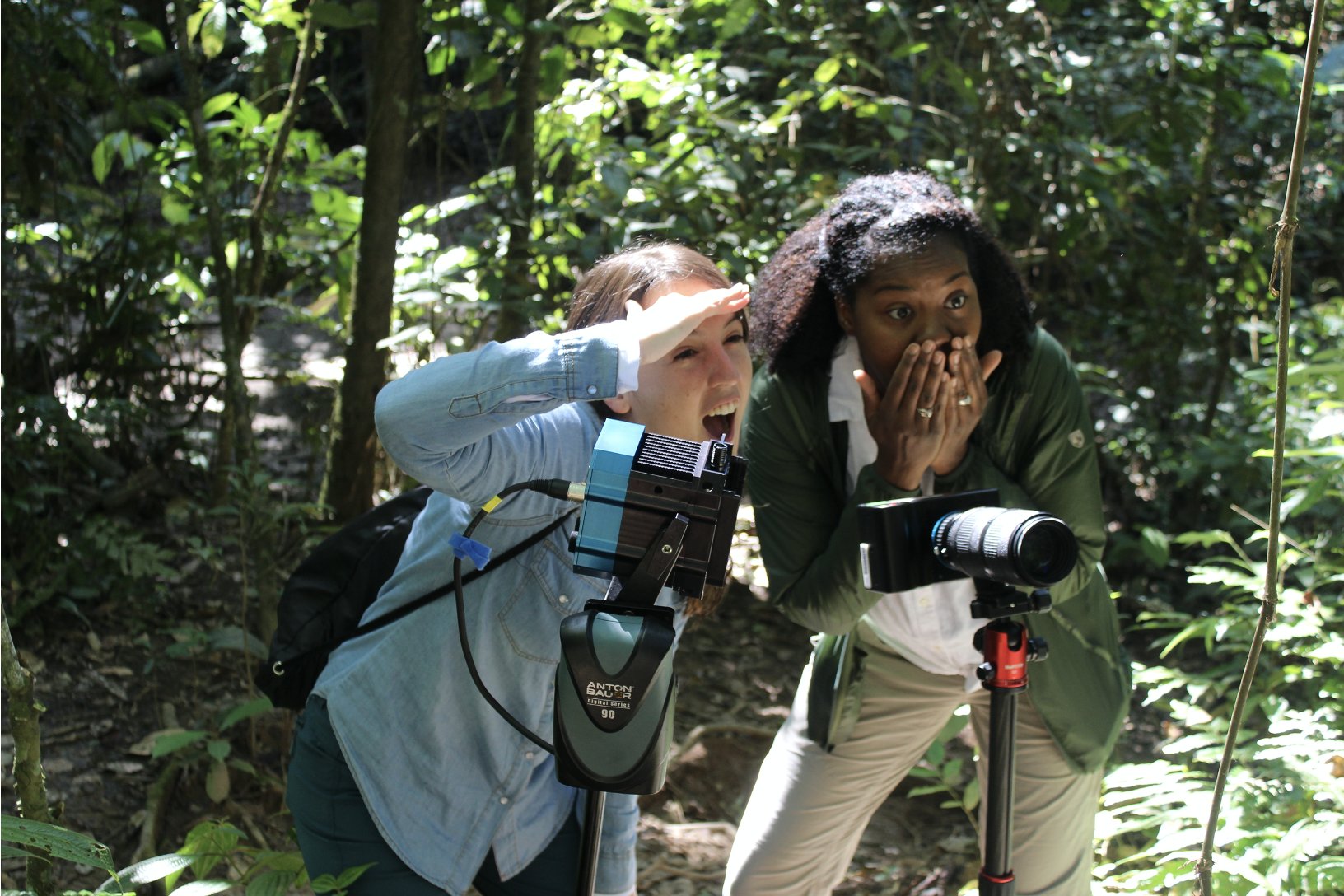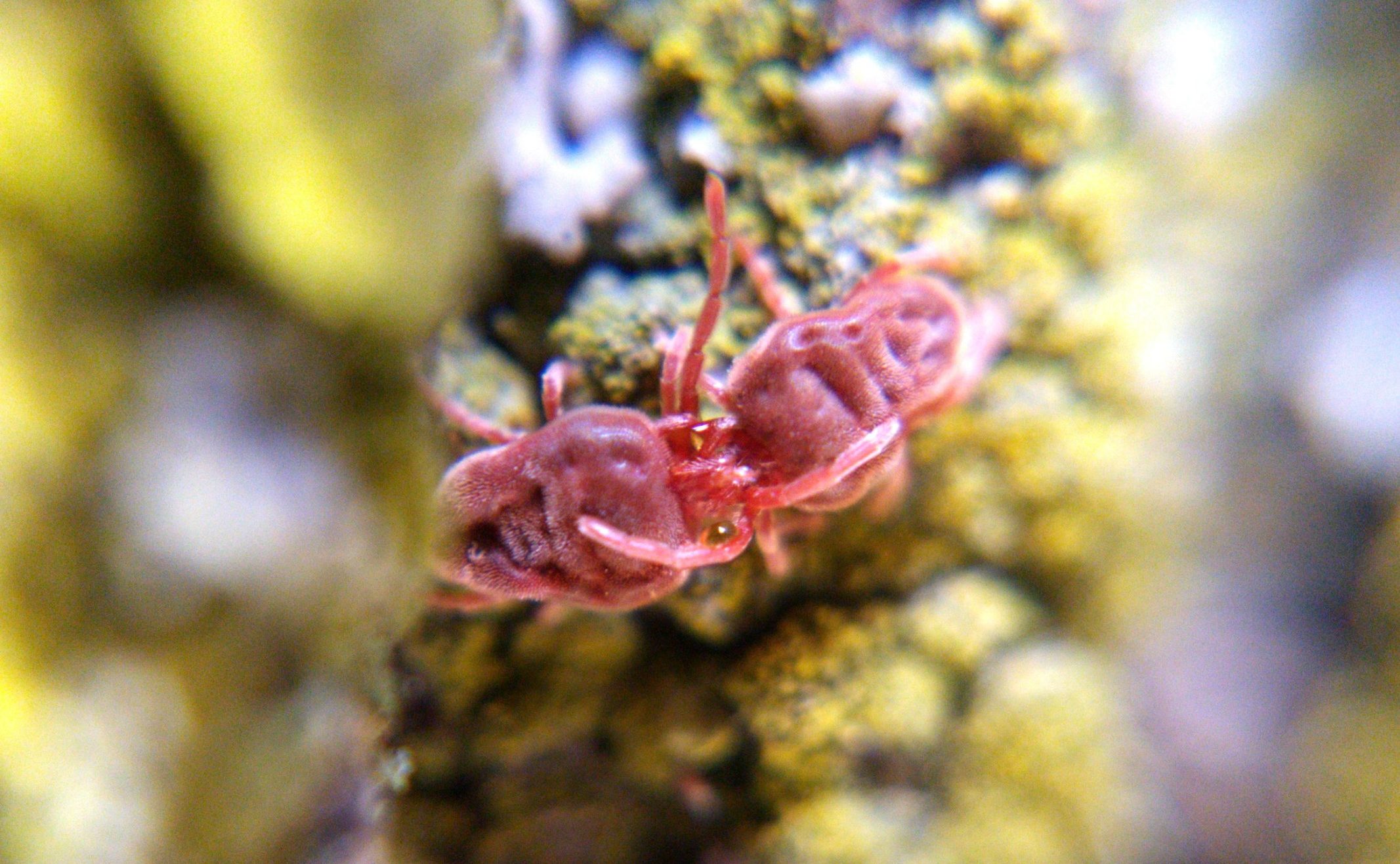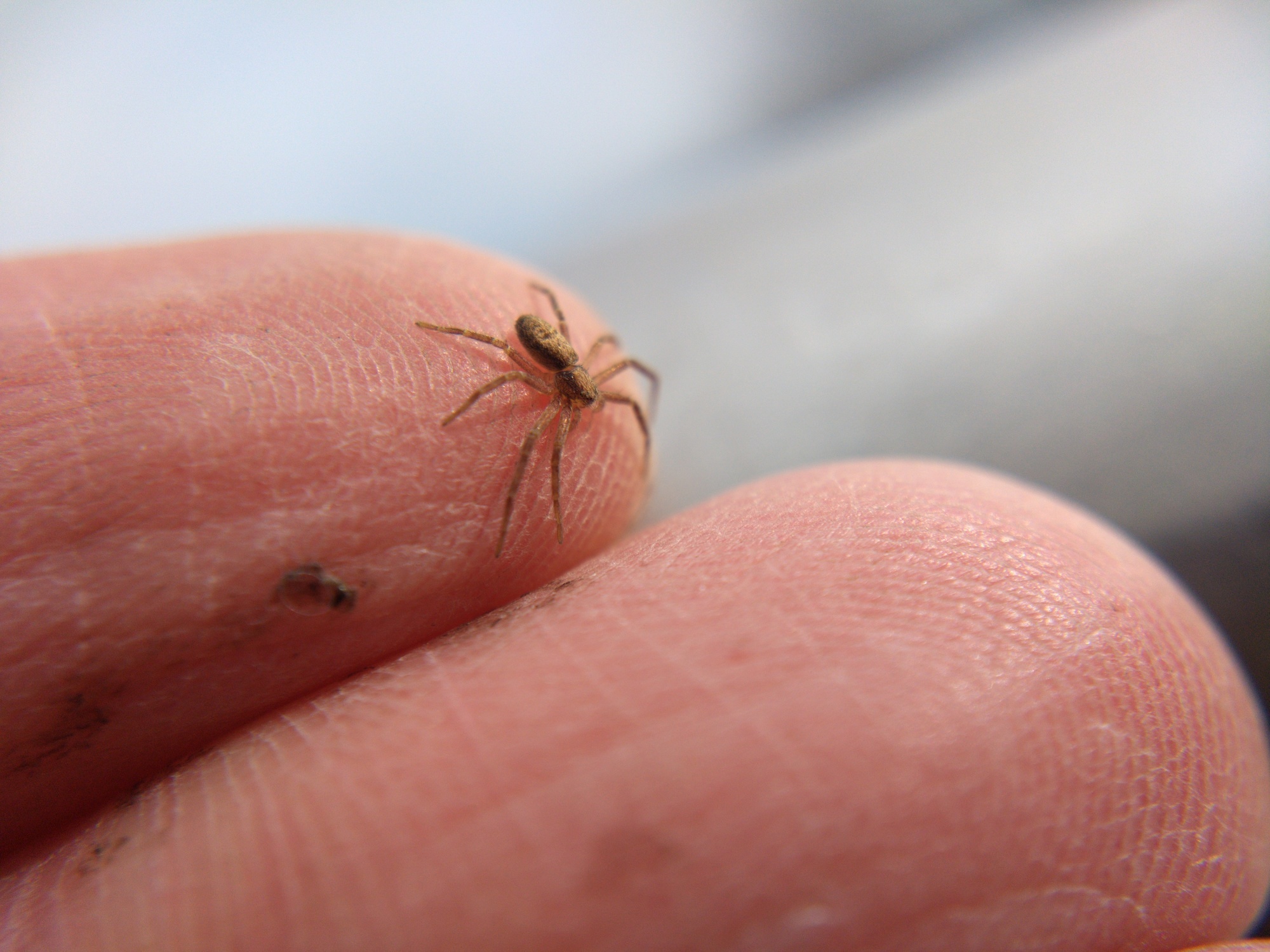The reference, for those of you lucky enough not to recognize it.
Recently I found a tiny four-legged running crab spider (family Philodromidae) in Trinity-Bellwoods and brought it home to keep temporarily until it grew its legs back. It was so small that I could keep it in a 45 mL plastic cup with a tiny chip of bark. I fed it sugar syrup on the end of a Q-tip, and then (as it was too small and terrified for the flightless fruit flies I raise for Sabella, my pet black widow) I made it a (disgusting) fruit fly-and-syrup mush to drink. It soon molted and grew back three legs, and was then big enough to catch fruit flies. I think it grew back the last leg its next molt, but perhaps dropped it again when it nearly escaped one night as I tried to feed it—a sign, to me, that it was time to release it. I made sure it ate again, then set it free at the spot in the park that I found it. It immediately caught a small green plant bug and raced off, lightning-fast and good as new.
I chronicled the whole thing on Mastodon, and received many replies from people who had no idea spiders could regrow legs! So here is a proper post about the phenomenon. Continue reading I Can Put My Leg Back On You Can’t: How Spiders Regrow Limbs
